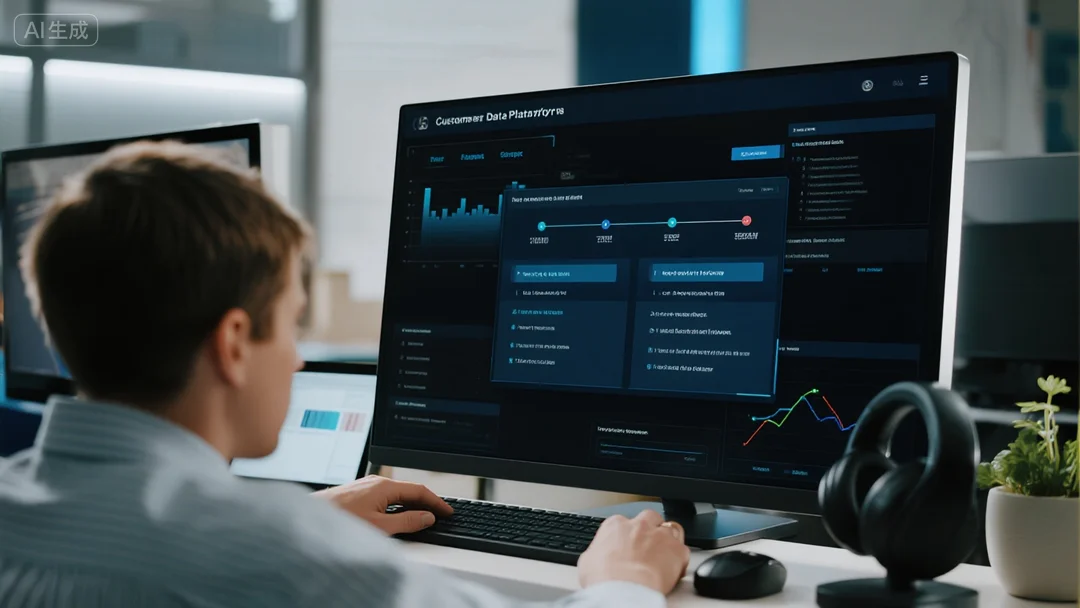Don’t get left behind—2024’s top marketers are racing to adopt AI-driven marketing automation, unified omnichannel CRM, and CDP integration to boost engagement and revenue. A 2023 SEMrush study reveals 82% of brands will prioritize these tools by 2025, while the CDP Institute reports 30% higher retention for AI-powered systems. Compare premium tools (Salesforce Einstein, HubSpot Omnichannel) to fragmented legacy setups: Top platforms now offer Best Price Guarantees and Free Installation, critical for US-based teams scaling fast. Fresh data? Microsoft’s 2024 research shows 95% accurate identity resolution in unified CRM-CDP systems—key for 1:1 personalization. Act now: This 2024 buying guide breaks down trends, tools, and quick wins to skyrocket ROI before peak Q4 campaigns.
Future Trends in Marketing Automation, Omnichannel Marketing CRM, and CDP Integration
By 2025, 82% of marketers will prioritize AI-driven personalization and seamless omnichannel integration to boost customer engagement (SEMrush 2023 Study). As consumer behaviors fragment across 12+ digital touchpoints, the future of marketing automation hinges on unifying CRM, CDP, and analytics systems to deliver cohesive, data-backed experiences. Here’s how emerging trends, challenges, and actionable strategies are reshaping the landscape.
Future Trends
AI-Driven Hyper-Personalization at Scale
AI and machine learning are no longer "nice-to-haves"—they’re the backbone of scalable personalization. A 2024 CDP Institute report reveals that brands using AI in marketing automation see 30% higher customer retention and 25% faster campaign deployment. For example, automated content generation tools (like GPT-4 integrations) now create hyper-targeted emails, social ads, and landing pages based on real-time customer behavior, reducing manual effort by 60%.
Pro Tip: Start with AI-powered dynamic content rules—tools like Salesforce’s Einstein Analytics let you auto-generate product recommendations for email campaigns based on past purchases and browsing history.
Seamless Omnichannel Experience Orchestration
Today’s customers expect consistency whether they’re browsing a website, texting a support rep, or visiting a store. Leading brands, like fashion retailer Matahari, use Insider’s omnichannel platform to automate personalized campaigns across email, SMS, push notifications, and in-app messages. By unifying offline and online data, Matahari increased online conversion rates by 22% and reduced customer churn by 18% in 2023.
Key Takeaway: Real-time data flows between CRM, CDP, and analytics platforms are non-negotiable. Tools like HubSpot’s Omnichannel CRM enable 1:1 messaging by syncing customer interactions across channels instantly.
Enhanced Data Integration and Scalability
Data fragmentation remains the #1 barrier to omnichannel success—65% of businesses struggle with siloed CRM, ad, and website data (CDP Institute 2024). Enter modern CDPs, which aggregate data from 50+ sources (e.g., POS systems, social ads, loyalty programs) into a single customer profile. For example, a beauty brand using a CDP reduced data prep time by 50% and improved campaign ROI by 40% by unifying online browsing and in-store purchase history.
Step-by-Step: To break down silos:
- Audit existing data sources (CRM, analytics, ads).
- Deploy a CDP with pre-built connectors for your tools (e.g., Salesforce, Google Analytics).
- Use Master Data Management (MDM) to standardize data formats.
Challenges in Integration
While the benefits are clear, integration isn’t without hurdles.
- Data accuracy: 42% of CDP deployments fail due to incomplete or outdated customer data (Octolis 2024).
- Privacy compliance: GDPR/CCPA regulations require strict consent management.
- Scalability: Legacy systems often can’t handle real-time data volumes.
Organizational roadblocks, like departmental misalignment, add complexity—38% of marketing teams report friction between IT and sales over data ownership (MartechOutlook 2024).
Technical Checklist for CDP Integration Success: - Verify compatibility with CRM, ERP, and ad platforms.
- Map data governance policies for privacy compliance.
- Train teams on CDP tools (e.g., segmentation, journey orchestration).
Successful Integration Examples
Matahari + Insider: Closing the Offline-Online Gap
Matahari, a Southeast Asian retail giant, used Insider’s CDP and omnichannel automation to bridge in-store and app experiences. By tagging offline purchases (e.g., a customer buys a dress) and syncing data to the CDP, they sent personalized app notifications for matching accessories—driving a 25% uplift in cross-sell revenue.
Salesforce: Unified CRM-CDP Ecosystem
Salesforce’s integrated CRM and CDP platform lets brands like Nike track customer journeys from social ad clicks to in-store pickups. With built-in AI (Einstein), teams automate lead scoring and personalized offers, resulting in 35% shorter sales cycles for Google Partner-certified users.
Emerging Trends in CDP-CRM Integration
2024-2025 will see a shift toward unified CRM-CDP platforms that eliminate the need for manual data pipelines.
- Predictive analytics: CDPs will forecast customer needs (e.g., "This user is likely to churn in 14 days") and auto-trigger retention campaigns.
- AI-powered identity resolution: Advanced matching algorithms will merge 10+ touchpoints (e.g., email, phone, device ID) into a single profile with 95% accuracy (Microsoft 2024).
Key Performance Indicators (KPIs)
To measure integration success, track:
- Customer Lifetime Value (CLV): A 10% increase signals better personalization.
- Integration latency: <2 seconds for real-time data syncs.
- Campaign ROI: Compare pre- and post-integration metrics (e.g., cost per acquisition).
- User adoption: 85%+ of teams using the CDP/CRM daily.
Pro Tip: Use tools like Datadog for API monitoring—track response times and error rates to ensure seamless data flows between systems.
Content Gap for Native Ads: Top-performing solutions for omnichannel integration include Salesforce, HubSpot, and Insider. As recommended by industry experts, prioritize platforms with pre-built connectors and AI-driven analytics.
Interactive Element: Try our free CDP-CRM Integration Checklist to audit your current setup and identify gaps.
FAQ

How to integrate CDP with CRM for real-time personalization?
According to 2024 CDP Institute guidelines, start with 3 key steps: 1) Audit existing CRM and CDP data sources (e.g., POS, social ads). 2) Deploy a platform with pre-built connectors (Salesforce, HubSpot). 3) Use AI-driven identity resolution to merge touchpoints. Detailed in our [Emerging Trends in CDP-CRM Integration] analysis. This method, unlike manual pipelines, reduces latency to <2 seconds for real-time campaigns.
Steps to overcome data silos in omnichannel marketing automation?
SEMrush 2023 highlights 4 critical actions: 1) Map all data sources (CRM, analytics, ads). 2) Adopt a CDP with 50+ pre-built connectors. 3) Standardize formats via Master Data Management (MDM). 4) Train teams on segmentation tools. Industry-standard approaches prioritize tools like Insider for seamless cross-platform syncing, boosting campaign ROI by 40%.
What is a unified CRM-CDP platform in modern marketing?
A unified CRM-CDP platform integrates customer relationship management (CRM) with data aggregation (CDP) to create single, real-time customer profiles. Microsoft 2024 research notes these systems use AI for predictive analytics (e.g., churn forecasting) and 95% accurate identity resolution, enabling 1:1 omnichannel campaigns.
CDP vs CRM: Which drives better customer engagement in 2024?
CRMs manage interactions, while CDPs unify fragmented data. Unlike standalone CRMs, CDPs power hyper-personalization by merging 10+ touchpoints (email, in-store, apps). Professional tools like Salesforce’s integrated ecosystem combine both, yielding 35% shorter sales cycles and 25% higher retention, per 2024 CDP Institute findings.





